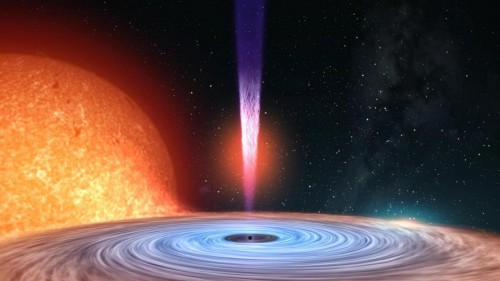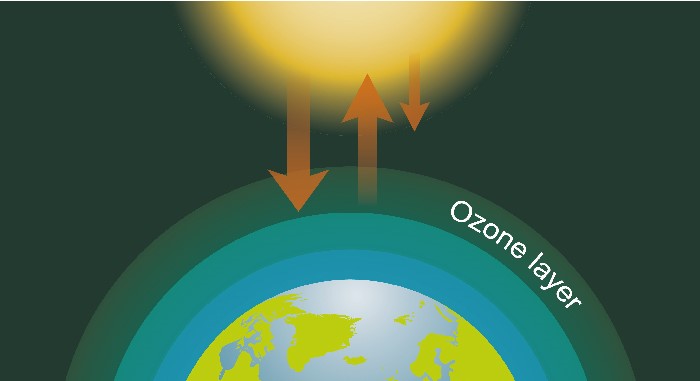Scientists, including the University of Alberta's Greg Sivakoff, were observing a black hole "feeding" on a nearby star when their instruments recorded a jet stream escaping from the hole that was quickly changing its trajectory, something that had never been documented before.
The black hole, named V404 Cygni, is nine times the mass of our sun and is located 7,800 light years from Earth.
After monitoring V404 Cygni with the Very Long Baseline Array (VLBA), a massive network of 10 radio telescopes set up all around the world, the team discovered that the plasma jets coming from the black hole "were changing so fast that, in a four-hour image, we saw just a blur," explained study co-author Alexandra Tetarenko, an East Asian Observatory fellow in Hawaii.
"We’ve never seen this effect happening on such short time scales," Miller-Jones said in a statement released today by the NRAO.
It's a bit like a spinning top that starts to wobble as it's slowing down, the researchers said. This change in the rotational axis of a spinning body is called precession. In this particular instance, we have a handy explanation for it courtesy of Albert Einstein.
In his theory of general relativity, Einstein predicted an effect called frame-dragging. As it spins, a rotating black hole's gravitational field is so intense that it essentially drags spacetime with it.
"We saw these blobs of radio emission that were moving away from where we thought the black hole would be — very rapidly," said Sivakoff, who was part of the international team of astronomers working with the International Centre for Radio Astronomy Research (ICRAR) when they made the discovery.
"That by itself is not atypical for what we do. But what was really strange was that we were seeing lots of these blobs on very short timescales," he explained on CBC Edmonton's Radio Active on Monday.
"Moreover, the direction that they were moving away from the black hole was changing over time and we'd never seen that before at this rapid a timescale."
The phenomenon was observed in the summer of 2015, but it took the team another four years to verify the data and findings.
The findings were published in the science journal Nature on Monday.
The theory behind what causes the "wobbling" movement, as Sivakoff calls it, is the basis for many science-fiction plots.
"Black holes can actually drag the spacetime around them and can twist that up," said Sivakoff.
As space and time bend around the jet, it creates a swirling effect that makes it quickly shift in different directions.
ICRAR shared an animated video of what they observed.
In the video, James Miller-Jones, lead author of the Nature paper and associate professor at Curtin University in Perth, Australia, explains that "as the black hole spins, it literally drags the fabric of the universe with it."
Moving forward, Sivakoff hopes this discovery could be the basis of future research on larger entities in space that astrophysicists believe are central to the creation of galaxies.
V404 Cygni is a stellar black hole, which are several times the mass of our sun. There are also supermassive black holes, which are millions to billions of times more massive than our sun.
Scientists have theorized that each galaxy contains a supermassive black hole, which created galaxies as the jet stream spat material into the universe.
Sivakoff said that discovering this "wobbling" jet could lead to a greater understanding of exactly how galaxies came to form in their distinctive clusters of planets and stars.
"Finding this astronomical first has deepened our understanding of how black holes and galaxy formation can work. It tells us a little more about that big question: 'How did we get here?'"

Researchers think they may have stumbled upon a clue to how new galaxies are formed after observing rapid and unexpected emissions from a massive black hole.




